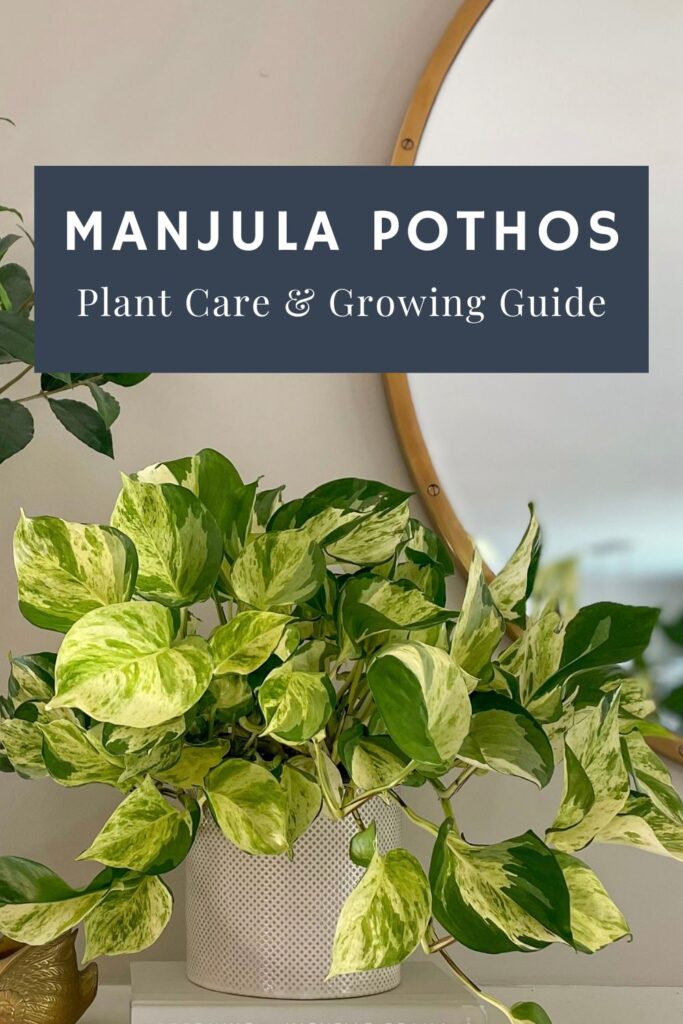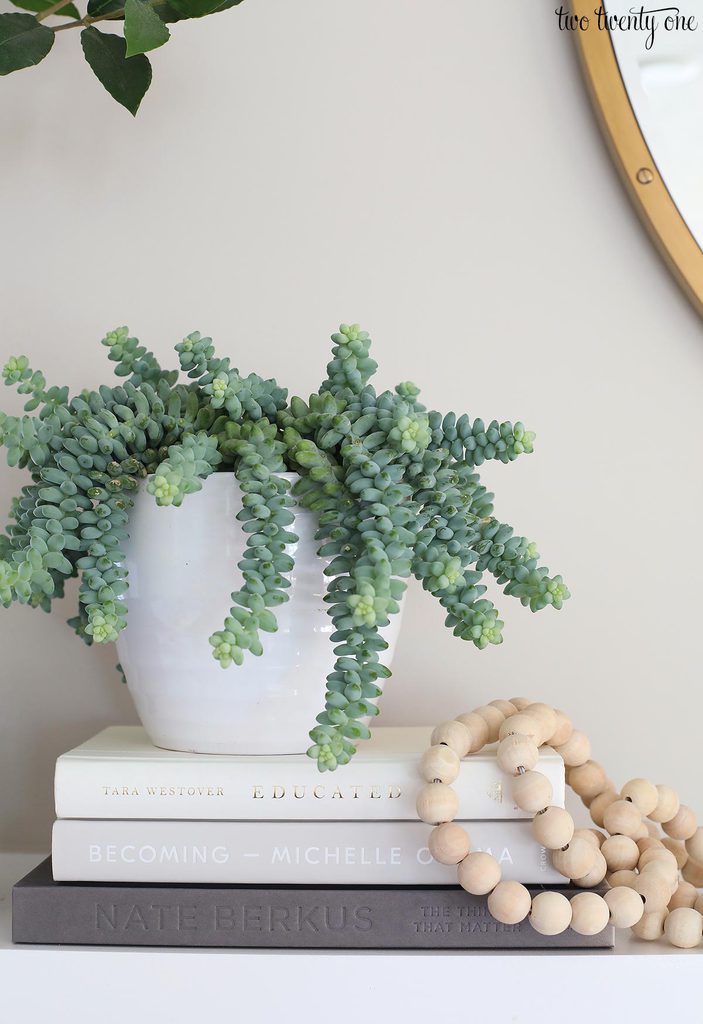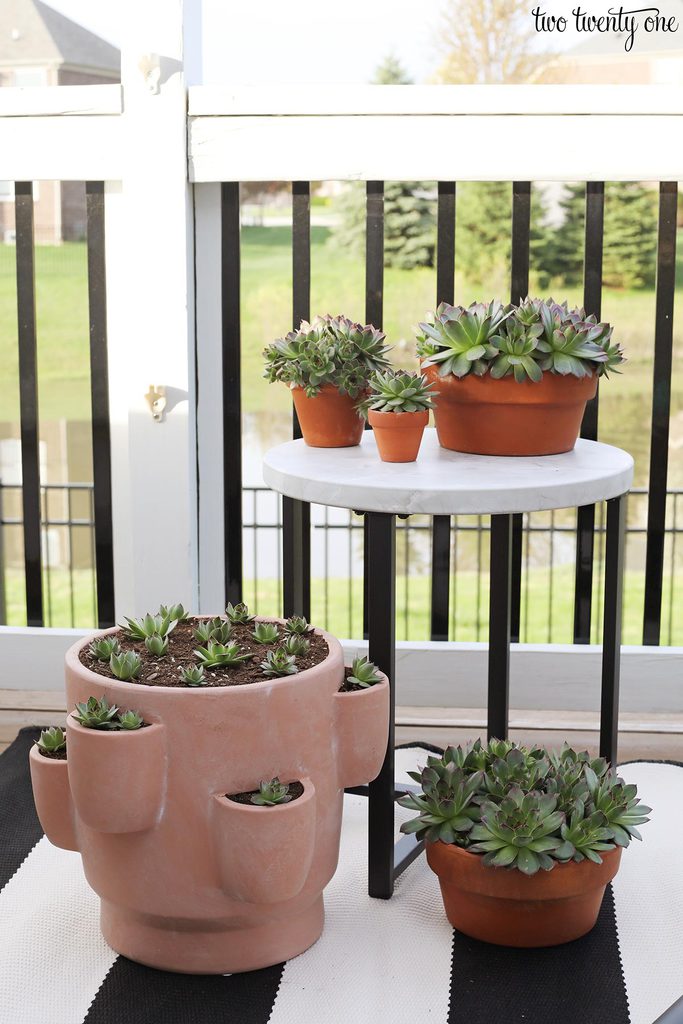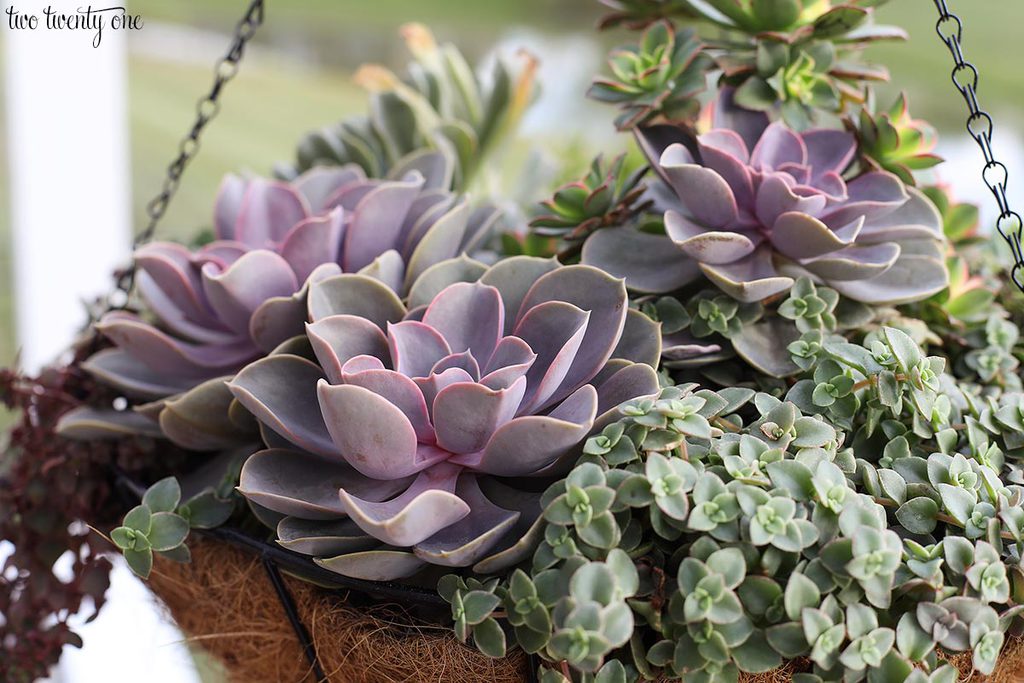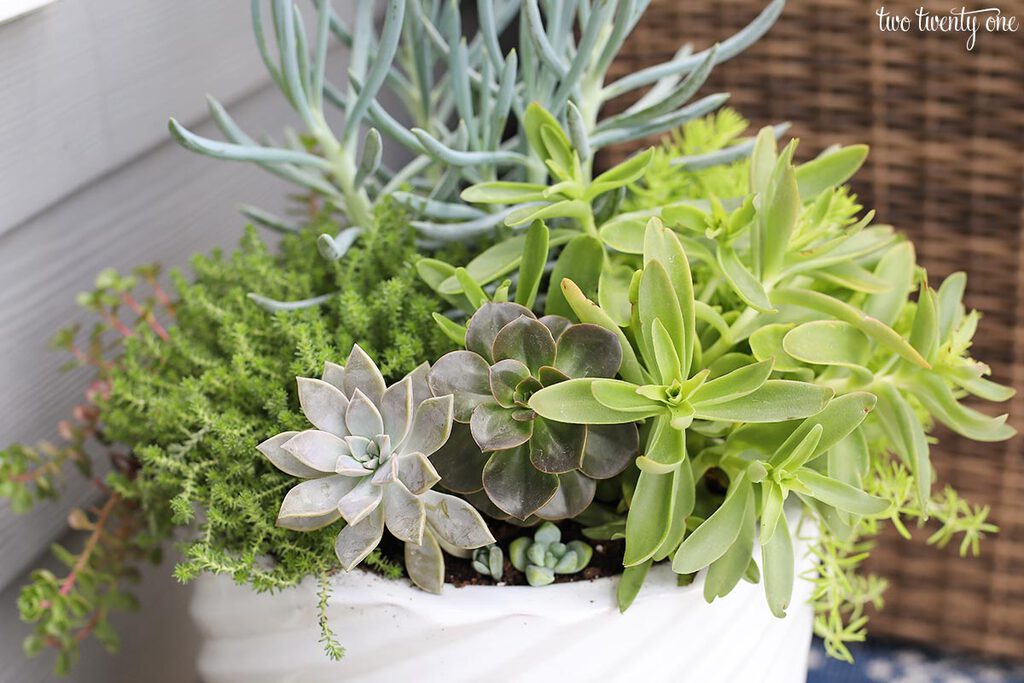Manjula Pothos Care Guide
There are many different varieties of pothos plants, but they all share one common trait: they’re easy to care for. In this guide, we’ll walk you through the basics of how to take care of a manjula pothos plant. From watering to fertilizing and pruning, we’ve got you covered. So read on to learn more about how to care for your manjula pothos!
I’ve shared many blog posts on caring for outdoor plants like peonies, hens and chicks, and other succulents. So I figured with colder weather setting in, it would be a good idea to share how I care for my indoor plants.
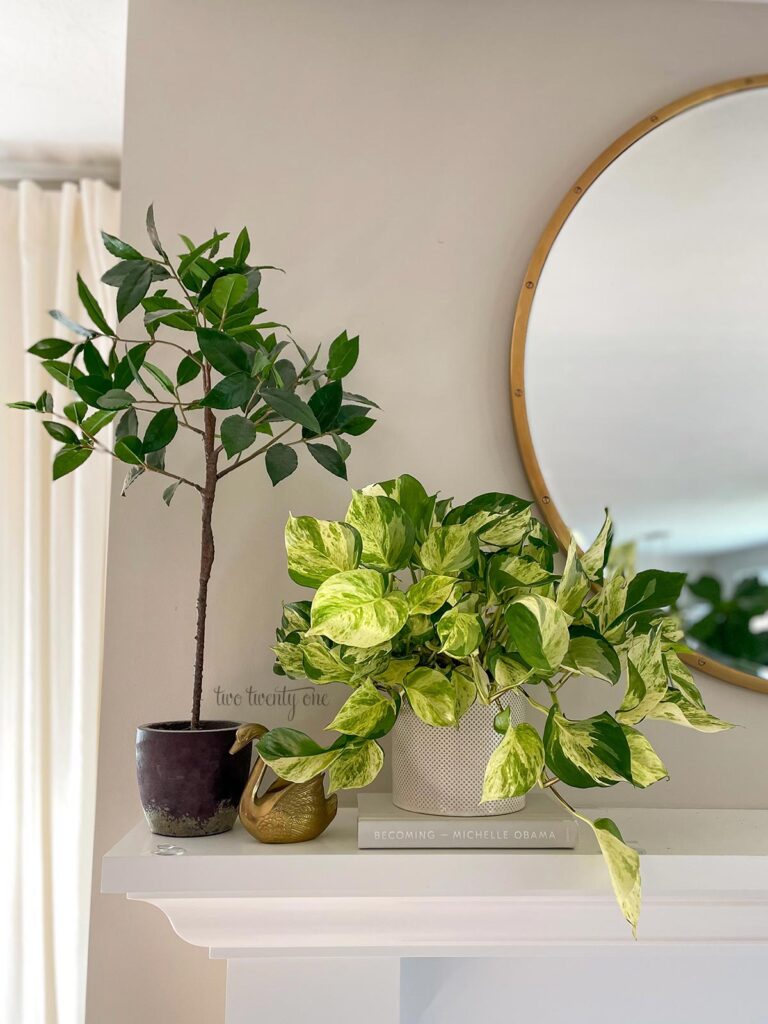
Origins of Manjula Pothos
The manjula pothos was discovered and cultivated at the University of Florida.
Manjula is botanically known as the Epipremnum Aureum ‘HANSOTI14’ or Happy Leaf Pothos.
Hansoti filed an application to patent the plant in 2014 and the patent was granted and published in 2016.
Manjula Appearance
- Foliage has blotched, white variegation and clear marbled pattern.
- The variegated leaves are green and green-yellow with dark and light shades present on each leaf.
- Petioles (leafstalks) are strong, light green-yellow with a single green stripe.
- Leaves are medium sized and broad ovular to broad triangular (heart) in shape.
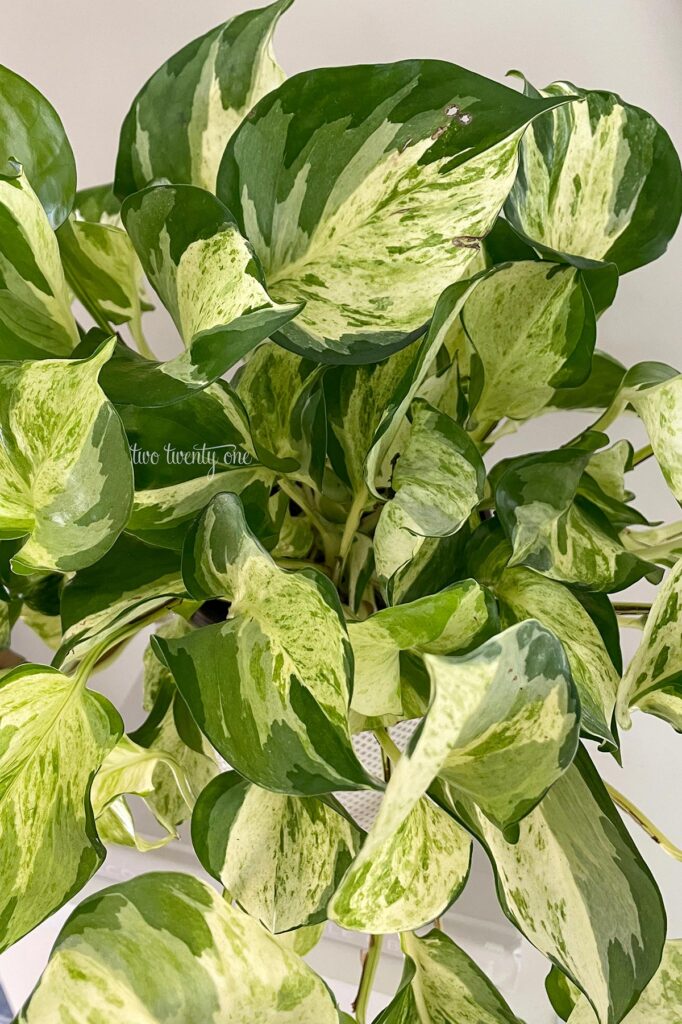
Manjula Pothos Care
Water
A good quality planter with large drainage holes will prevent your plant from developing root rot.
This pothos needs water regularly, so be sure to keep an eye out for signs of moisture loss, like drooping leaves and stems.
If you want to know whether your soil is ready for planting, stick your fingers 2″ into the soil and see if it feels moist or dry. If it feels dry, it’s time to water. You can also purchase a plant moisture meter if sticking your fingers in soil weirds you out.
When watering, I like to take my pothos to the kitchen sink and drench the soil with water until water begins pouring out of the drainage holes. Then, I set the plant on a saucer for it to finish draining before setting it back where it belongs.
If you’re going to put your manjula pothos in a terrarium, ensure there is proper drainage.
Light
This particular plant requires bright indirect light because it has so much white in it. The light helps make the lighter parts of the leaves pop more. So, low light conditions aren’t the best for this pothos.
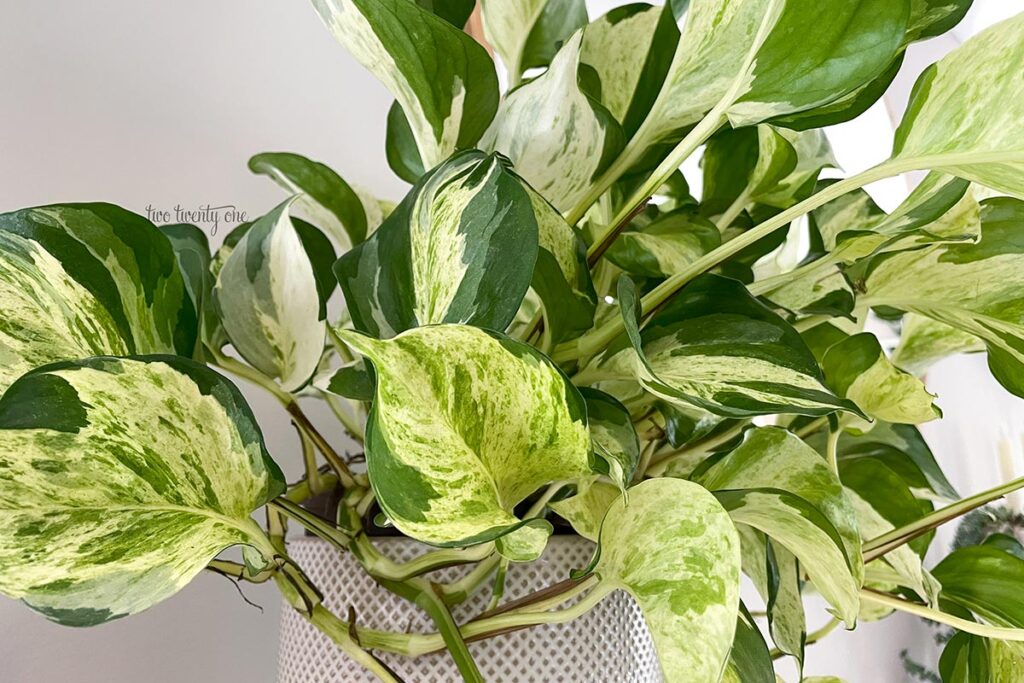
Soil
Manjula pothos prefers moist, loamy soil that drains well. It grows best in a potting mix with a pH range from 6.1 to 6.5.
Fertilizer
Manjulas don’t require a lot of fertilizer. They will need to be fertilized during the spring and summer growing season to promote new growth.
Use a balanced liquid fertilizer for houseplants bi-weekly from April through August. Do not fertilize during colder months.
Temperature
They can handle temperatures from 45 degrees Fahrenheit to 100+ degrees Fahrenheit for short periods of times. But be sure that it has some shade if temperatures are high.
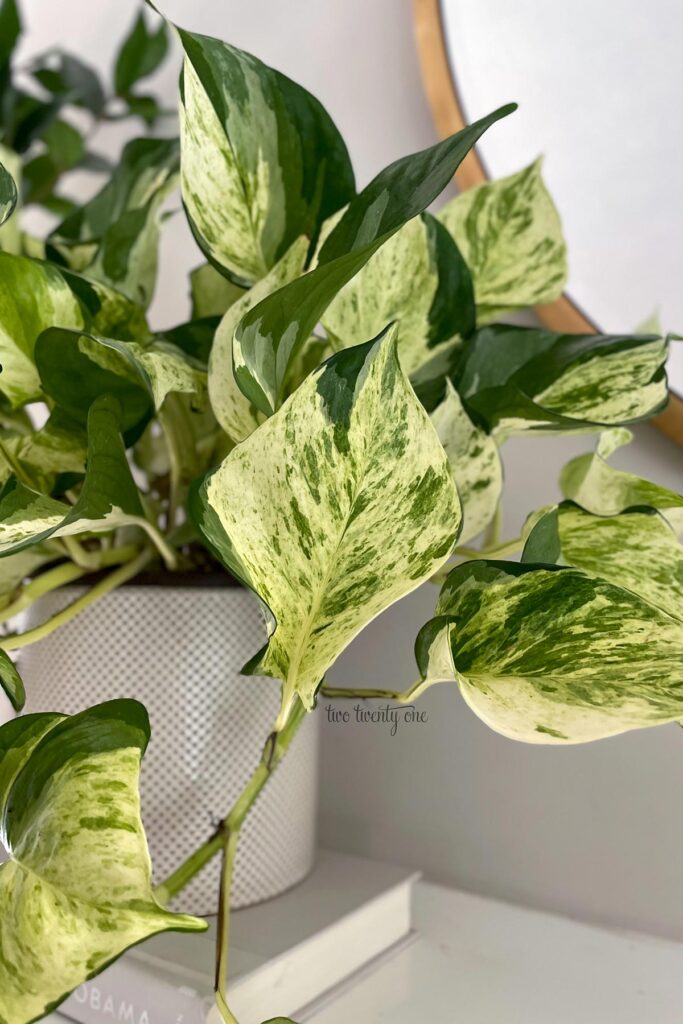
Humidity
Manjulas prefer high humidity. They like a 60-90 percent relative humidity level.
To increase the moisture content of the air, place your manjula near other houseplants or put the plant on top of a stone tray. As the moisture in the pebbles evaporate, humidity increases around the plant.
Growth
Manjula pothos grows at a slow to moderate pace.
Clusters of short, new shoots are formed in the center of the plant, forming trailing vines with age. The manjula is very free branching.
It begins growing as a mounded, compact shape, which means that it grows both horizontally and vertically, giving it fuller, bushier growth. But as it matures, the plant will begin to trail.
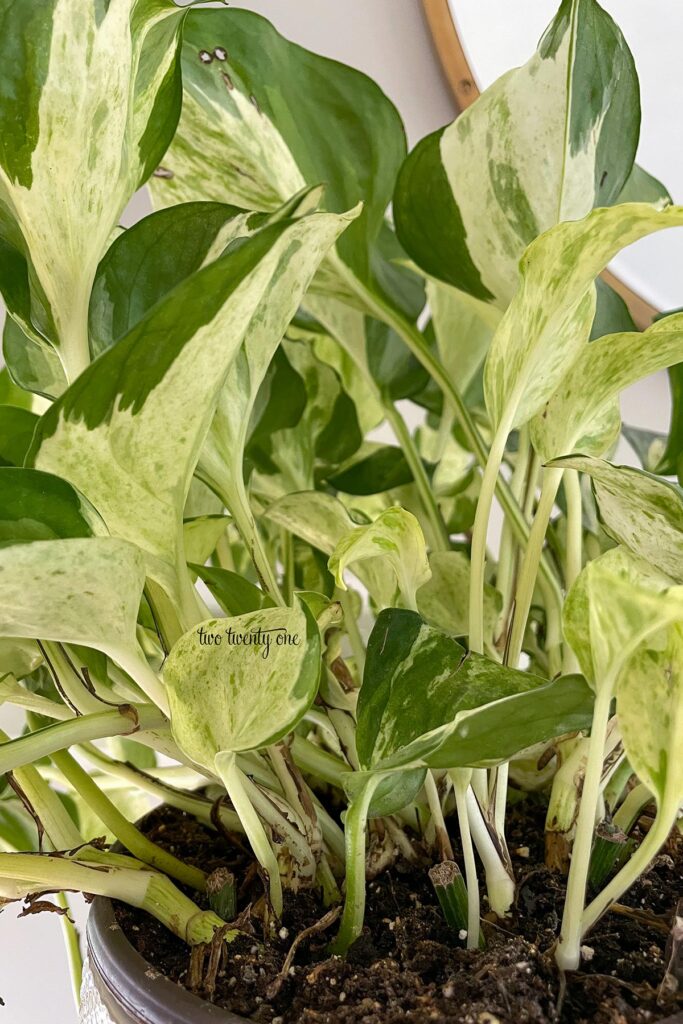
Pruning
To keep your plant looking full and rounded, prune your manjula pothos regularly or cut off the tips of its stems. You can use cutting pieces with leaf nodes to propagate the manjula plant.
Repotting
Repotting your manjula during springtime is ideal because it allows for new roots to grow into the soil during the warmer months. However, this should only be done when the plant has outgrown its current container, which can take up to two years to occur.
Once you see roots coming through the drainage holes or breaking up the topsoil, it’s time for repotting.
To repot, get a container that’s approximately 2 inches bigger than the current one. Add some soil to your pot. Put the plant inside the container and then add some soil.
Common Problems with Manjula Pothos
Brown Leaves
The most common reasons pothos leaves turn brown is lack of water, dramatic variations in temperature, or too little or too much direct sunlight.
Yellow Leaves
There’s many different reasons why pothos leaves turn yellow. Some reasons include overwatering, under-watering, aging leaves, root rot due to too much water, or root bound.
Drooping Leaves
Drooping manjula pothos leaves signifies that the plant needs to be watered.
In the left photo below, you can see how the pothos leaves are drooping because it needs watering. The photo on the right was taken 24 hours after watering the pothos.
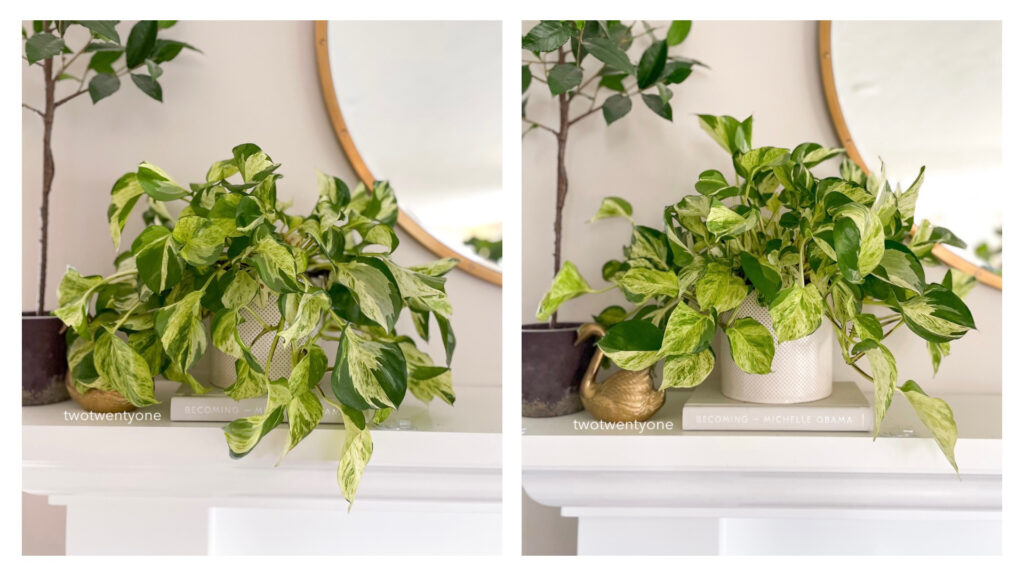
Stay on top of watering your pothos by creating a schedule where you can remember to check the moisture level of the soil.
Pests
Pothos are relatively hardy but insects can be an issue. The most common pothos pests are mealybugs and spider mites. Less common pests include thrips, whiteflies, aphids, and scale. If you do notice pests, treat with insecticidal soap or neem oil.
How to Propagate Manjula Pothos
Manjula pothos propagation through stem cuttings is easy. Cutting stems from your plants will not only help you grow new plants for sharing with others, but it will also help them grow better by encouraging branches to form.
If you want to grow bigger plants from your rooted cuttings, you can either replant them into their own pots or put them back into the original pot.
To propagate your manjula pothos by cuttings, follow these steps:
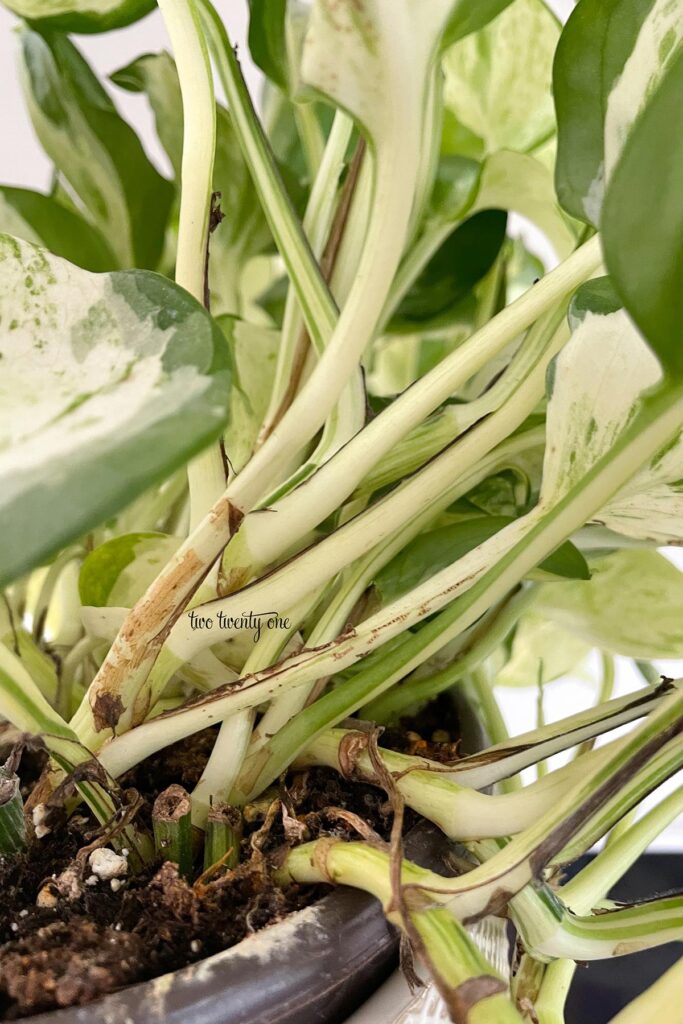
Time needed: 5 minutes
How to Propagate Manjula Pothos
- Cut Off the Cutting
Remove a 4-5 inch long piece of the pothos, making the cut below a node.
- Put in Water
Fill a jar with water. Before submerging the cutting in water, remove and discard the leaves from the bottom part of the cutting. This is so the cutting stem can fit inside your water vessel and because leaves will dirty the water.
- Location
Place the cutting in a location where it receives indirect, bright light. Refresh the water every 1-2 weeks.
- Roots
Roots will appear after 3-4 weeks. When the roots are at least one inch in length, it’s time to plant the cuttings.
- Planting
Plant the cuttings in moistened soil. Keep the potting soil moist for the first 1-2 weeks after planting. Once the roots are established, water regularly.
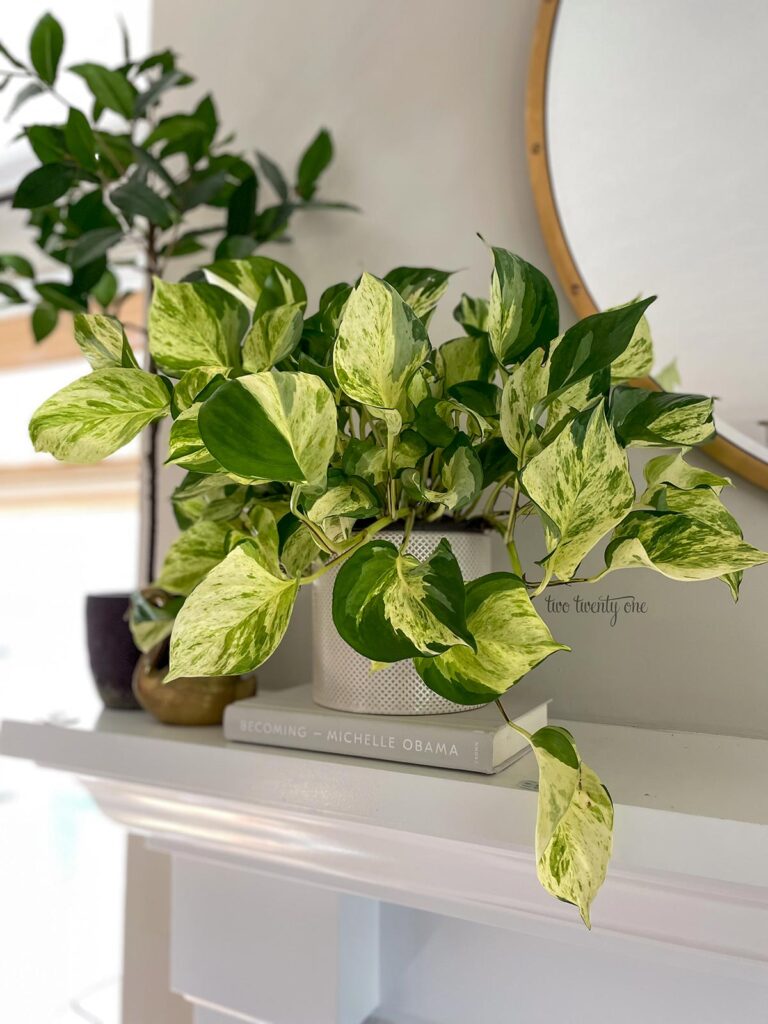
Comparing Manjula Pothos with Other Pothos
Manjula Pothos vs Pearls and Jade
In terms of leaf size and appearance, Manjula Pothos leaves are much larger and wider than Pearls and Jade. Majula has heart shaped leaves whereas Pearls and Jade has more of an ovate shape.
The coloring is similar, but Manjula leaves have a greater mix of white, cream, yellow and green swirls with sections of darker green in varying sizes. Pearls and Jade leaves have splashes of white and cream with greater areas of green.
In terms of growth, Pearls and Jade grows faster than Manjula.
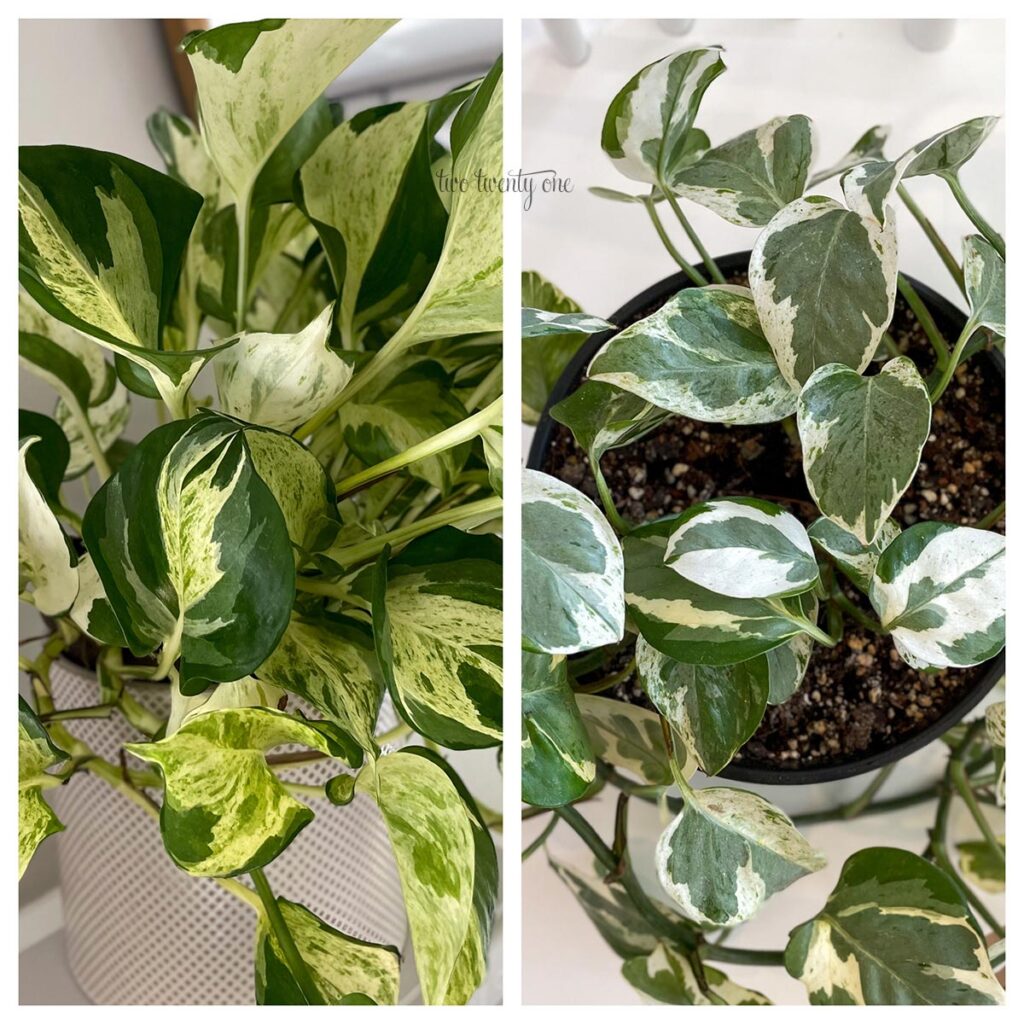
Manjula vs Marble Queen
Majula Pothos and Marble Queen Pothos have similar leaf shapes, Marble Queen leaves are more ovate. Manjula has very wide, heart-shaped leaves.
The main difference in their appearance is that Marble Queen tends to have more flecks of green on yellow leaves. Whereas Manjula has more of an erratic leaf color pattern the features different shades of green, yellow, white.
Marble Queen is faster growing than Manjula.
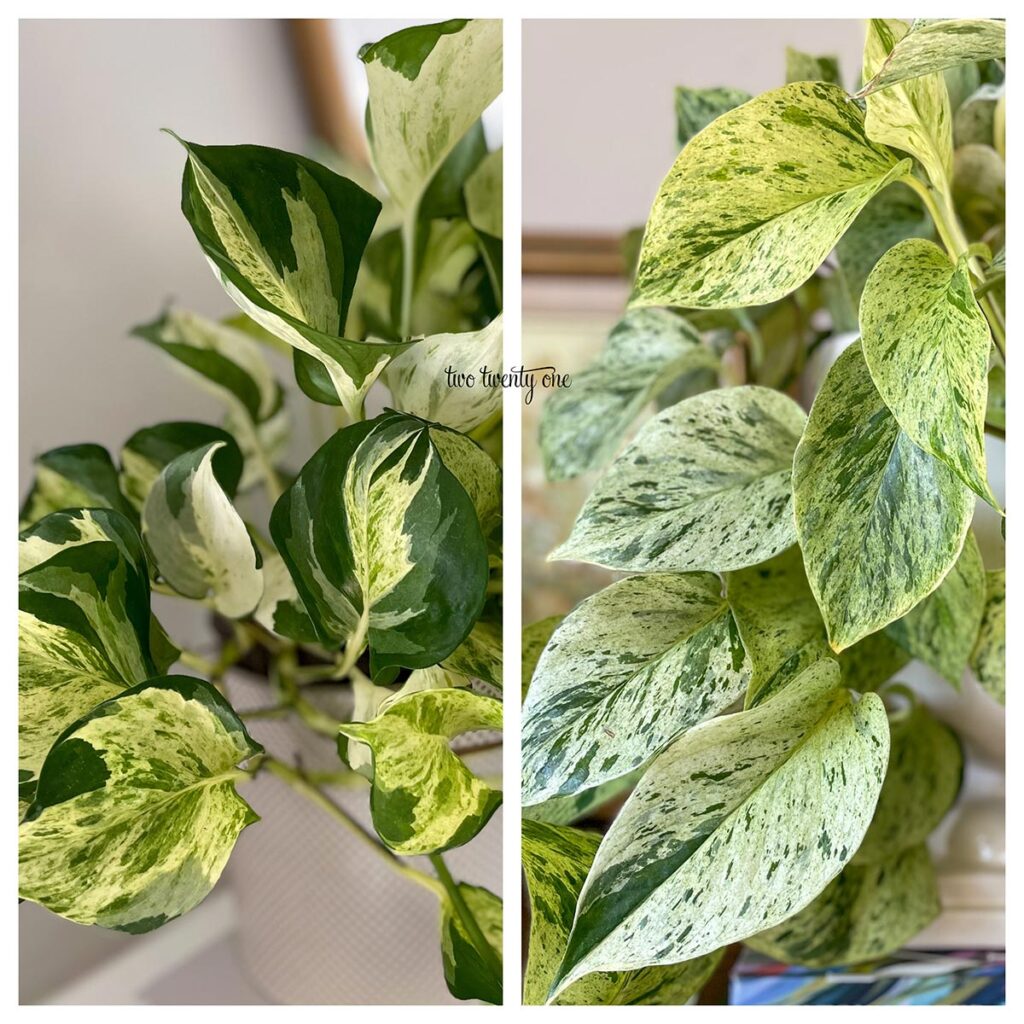
Where to Buy
Manjula pothos can be purchased at big box stores like Lowe’s and The Home Depot.
You can also find them at local plant stores and grocery stores.
If you want one now, manjula pothos can be found on Etsy in a variety of sizes and price points.
FAQ
Is a manjula pothos rare?
The manjula pothos isn’t rare per se. But it isn’t as readily available like other varieties of pothos. It’s harder to find manjula pothos in stores, but they’re easily attainable online.
Is manjula pothos toxic?
Unfortunately, as with all pothos, manjula pothos is toxics to humans, dogs, and cats if ingested.
Is manjula pothos expensive?
It depends on where you purchase a manjula pothos. If you’re lucky enough to find one at a big box store, you can buy a more mature manjula in a 6-inch pot for about $17. That’s where I bought my manjula. Manjula pothos are typically more expensive when purchased from small plant shops and Etsy.
